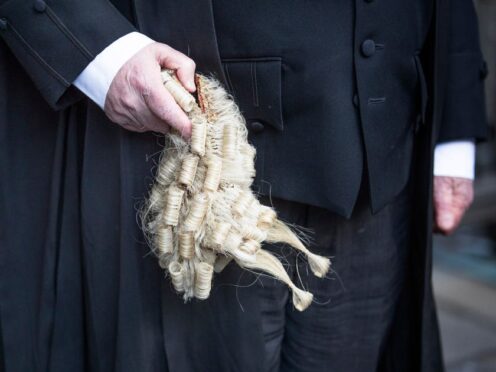
A charity is calling for changes in the way sudden deaths are investigated in Scotland, saying the system of coroner’s inquests should be used instead.
Faces and Voices of Recovery (Favor UK) want Scotland to replicate the inquests system used elsewhere in the UK, where a coroner examines the circumstances around sudden deaths.
Along with families who have lost loved ones to sudden deaths, they say there is a “disturbing trend of reclassifying potential homicides as suicides or accidents”.
The Crown Office’s Scottish Fatalities Investigation Unit (SFIU) examines deaths which take place north of the border. Fatal Accident Inquiries take place for certain deaths.
In Scotland, drug-related fatalities have soared to unprecedented levels, casting a shadow over our nation’s health and justice systems. Faces & Voices of Recovery UK will host a live presentation to help address this at 11am TODAY.https://t.co/omQLfnwhfBhttps://t.co/BUjiVPzP35 pic.twitter.com/pTnwUHbrCW
— FAVORUK 💜 (@FAVORUK) April 15, 2024
Favor UK’s CEO, Annemarie Ward, spoke to the BBC’s Good Morning Scotland radio programme on Monday.
She said the SFIU is not showing enough thoroughness in its investigations, adding: “We’ve noticed a disturbing trend where these deaths might involve foul play – are instead being labelled as suicides or accidents.
“And this not only masks the real issues but it also stifles the important discussions we need to have publicly.”
The system of inquests used in England, Wales and Ireland is “more inclusive and transparent”, she said, arguing that it involves families more.
Supporting their calls is Stuart Graham whose stepson, Colin Marr, died in 2007 aged 23.
The family have long challenged the initial police finding of suicide.
Mr Graham was critical of the investigation into his stepson’s death, saying: “The failings were right at the beginning and there was no way that can be tested.”
A spokesman for the Crown Office and Procurator Fiscal Service said: “We understand the impact that the loss of a loved one can have on bereaved families.
“The procurator fiscal will investigate every death reported to us thoroughly and independently.
“This work seeks to establish what happened and consider whether criminal proceedings or a Fatal Accident Inquiry would be appropriate.
“It is a strength of the Scottish system, which reflects a common European model, that death investigations are undertaken by a public prosecutor, who in Scotland is the procurator fiscal.”

Enjoy the convenience of having The Sunday Post delivered as a digital ePaper straight to your smartphone, tablet or computer.
Subscribe for only £5.49 a month and enjoy all the benefits of the printed paper as a digital replica.
Subscribe